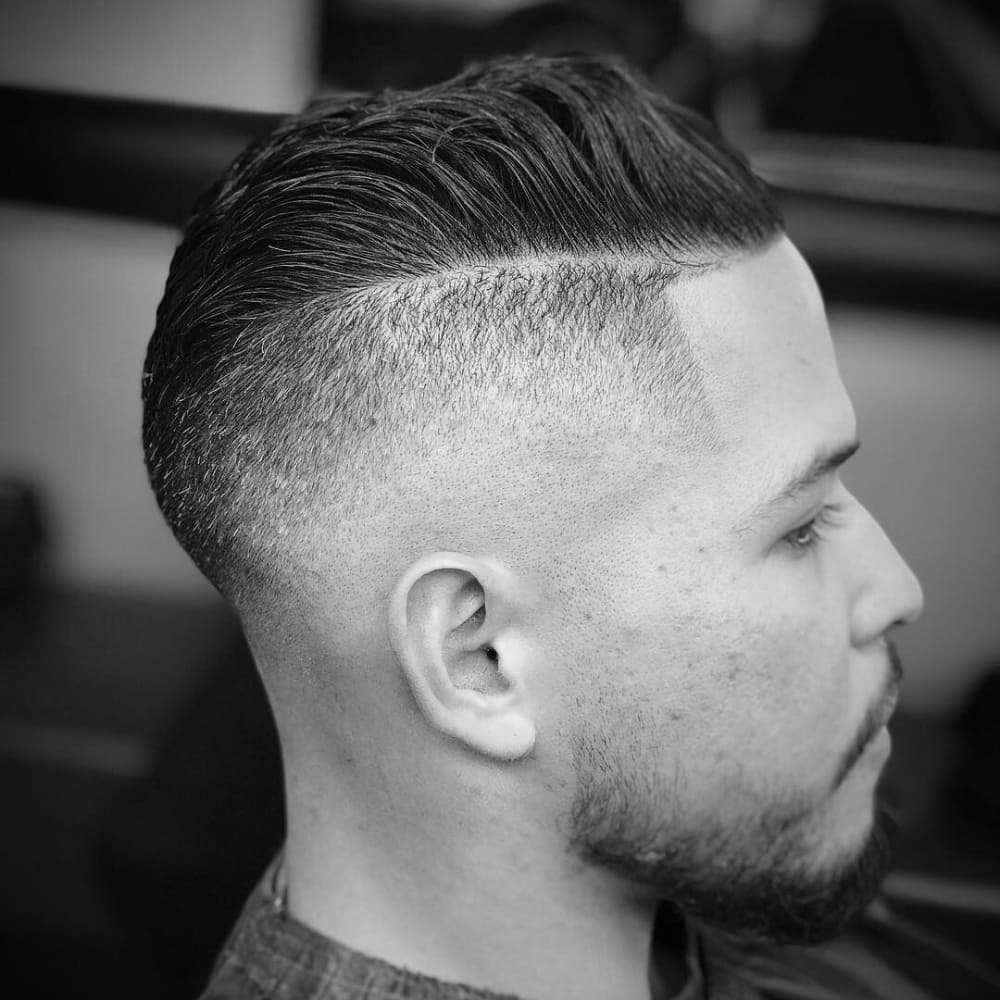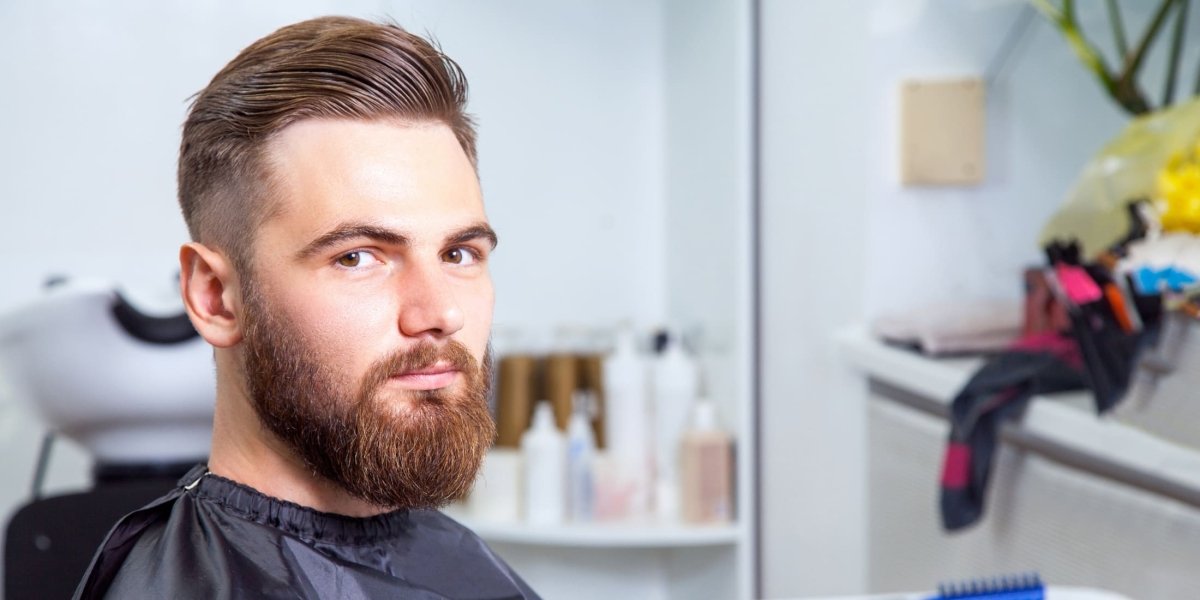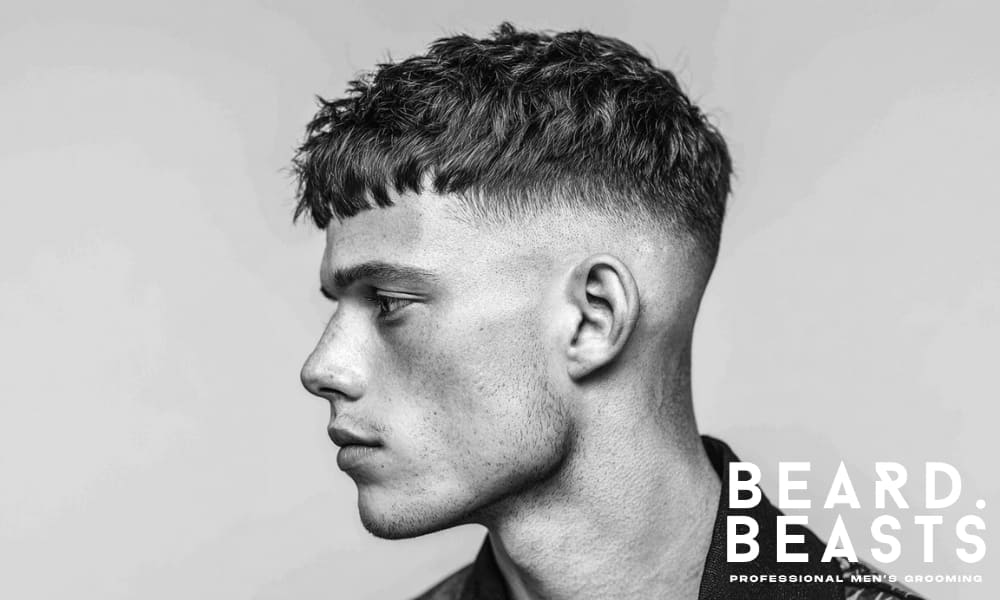Deciding between an undercut vs taper can feel tricky. Both styles can dramatically change your look, but they offer very different vibes. An undercut brings a bold, contemporary edge with sharp contrasts, while a taper offers a refined, classic finish with a smooth fade.
This guide will clearly explain the key differences, helping you understand which style best suits your face shape, lifestyle, and personal taste. We’ll provide practical tips to ensure you walk into your next haircut appointment feeling confident and ready for the perfect style.
What is an Undercut?

@ajcutshair
So, what exactly is an undercut? Imagine your hair with really short sides and back, and then a much longer top. That’s the basic idea. It’s a bold look that’s super popular because it’s so versatile. You get that sharp, modern edge, and you can style it in tons of ways. Want a slicked-back look? Go for it. A pompadour? Easy. Or maybe you like a textured, messy vibe? The undercut can handle it all.
When you’re thinking about an undercut vs taper, the undercut really stands out because of that dramatic change in hair length. It creates a striking, defined look that’s hard to miss. Plus, it’s great for guys who want a hairstyle that works for both casual and dressy occasions, without needing a lot of fuss. Basically, an undercut gives you a lot of style with a bit of convenience.
What is a Taper?

@crescendo_men
Now, let’s talk about the taper. Think of a haircut that gets shorter bit by bit, from the longer hair on top down to really short at your neck. That’s a taper. It’s a classic look, and it’s super versatile. Instead of the sharp change you see with an undercut, a taper gives you a smooth, natural fade. It’s perfect if you want a polished, professional look that’s not too flashy. You can wear it to a fancy dinner or just hanging out with friends, it works for everything.
When you’re weighing up an undercut vs taper, the taper is the go-to for guys who want something easy to take care of. It grows out nice and even, so you don’t have to run to the barber every few weeks. It’s a reliable choice if you like a timeless style with a bit of modern touch.
Undercut vs. Taper: Key Differences
Choosing between an undercut vs taper can be tough. Let’s break down the key differences between these two popular cuts so you can confidently choose the right style for you.

Contrast and Transition
One of the biggest differences between an undercut and a taper is how the hair transitions from the top of your head to the sides and back.
- Undercut: Imagine really short, even shaved, sides and back, with a noticeably longer top. This creates a bold, eye-catching look that draws attention to the top of your hair, allowing for more adventurous styles.
- Taper: Think of a smooth, gradual fade from longer hair on top to shorter hair at the neckline. This creates a natural and blended look that’s perfect for a subtle and professional style.
Maintenance Requirements
Let’s be real, how much time you want to spend on your hair matters!
- Undercut: This cut needs a bit more attention. You’ll probably need to visit your barber every 2 to 3 weeks to keep those sharp lines looking crisp. But hey, if you love that polished, always-groomed style, it’s totally worth it.
- Taper: This is the low-maintenance option. Its gradual fade allows it to grow out naturally, meaning you can stretch those barber visits a bit longer. You’re probably good with a trim every 4 to 6 weeks.
Styling Versatility
Both undercuts and tapers give you options for styling, but they offer different vibes.
- Undercut: Think of this cut like a blank canvas. You can slick it back, rock a pompadour, or even do a messy, textured thing. That big difference between the top and sides lets you get creative with your look.
- Taper: This cut is also versatile, but it’s more about a subtle, refined look. You can definitely add volume and texture, but it’ll be more understated.
Vibe and Suitability
Your hairstyle can say a lot about your personality and lifestyle.
- Undercut: This style has a modern and edgy vibe, making it perfect for those who want to stand out and express a bold and confident personality.
- Taper: This is a classic and versatile look that suits a wide range of situations, from business meetings to casual weekends. It’s a reliable choice that adapts well to different occasions.
Face Shape and Hair Type Considerations
The right hairstyle should work with your natural features.
- Undercut: This cut is best suited for oval, square, and round face shapes. It can add height and elongate the face, creating a balanced look. This style works particularly well with straight and wavy hair, offering enough length on top for styling.
- Taper: This is the more flexible choice, complementing almost all face shapes and hair types. Its natural fade can soften angular features and add structure to rounder faces.
Ultimately, when deciding between an undercut vs taper, consider how much maintenance you’re willing to commit to, how bold or subtle you want your look to be, and how well each style matches your face shape and hair type.
How to Choose Between an Undercut and a Taper
Alright, now that you know the key differences between undercuts and tapers, how do you actually choose the right one for you? It’s not just about the style itself; it’s about finding a haircut that fits your lifestyle, personality, and grooming habits. Here’s a practical guide to help you make the best decision:
Define Your Style Goals
Before you settle on a haircut, think about the message you want your hairstyle to convey.
- Go for an Undercut If: You want a bold and modern look that stands out. The undercut is perfect for men who enjoy experimenting with trendy styles and aren’t afraid of a bit of edge.
- Choose a Taper If: You prefer a classic and versatile appearance. The taper offers a timeless style that can adapt to both professional and casual settings without drawing too much attention.
Ask Yourself: Do you want your hair to be a statement piece or a subtle enhancement to your overall look?
Assess Your Grooming Routine
Your daily routine plays a big role in choosing the right cut.
- Undercut: If you enjoy styling your hair and are willing to maintain a regular grooming schedule, the undercut’s versatility will reward you with a range of styles.
- Taper: If you prefer a low-maintenance routine, the taper’s natural grow-out will help you maintain a neat look without frequent barber visits.
Consider This: Are you someone who enjoys taking time on your hair daily, or do you need a style that looks good with minimal effort?
Consider Your Professional and Social Environment
Where you spend most of your time can influence your hairstyle choice.
- Undercut: Works well in creative or relaxed workplaces and social environments where a bold style is a plus. It’s great for men who enjoy a bit of individuality and flair.
- Taper: Ideal for more conservative or professional settings, offering a polished and clean look that’s always appropriate.
Pro Tip: The taper is a safe bet if you often switch between formal and casual settings.
Evaluate Your Hair Type and Growth Pattern
Your hair’s natural characteristics can guide you towards the best option.
- Undercut: Best if your hair is straight or wavy, as this allows for maximum versatility when styling the longer top.
- Taper: A more flexible choice for all hair types and textures, from straight to curly, offering a natural look regardless of how your hair grows out.
Barber’s Advice: If your hair tends to grow quickly or unevenly, a taper might help you maintain a neater appearance between trims.
Decide Based on Your Face Shape
Your face shape can also help you decide.
- Undercut: Ideal for creating sharp angles and adding height to round or oval face shapes.
- Taper: Offers a softening effect on sharp features and works well with all face shapes, providing a balanced look.
Quick Tip: If you’re unsure of your face shape, a taper is the safest option, as it complements most features.
Not sure about your face shape? This guide can help.
When deciding between an undercut vs taper, think beyond just the style itself. Consider your lifestyle, how much effort you want to put into your grooming routine, and what fits best with your personal and professional life.
By focusing on these practical aspects, you’ll not only look great but also feel confident and comfortable with your choice.
Conclusion: Finding Your Perfect Style – Undercut vs Taper
So, there you have it! We’ve explored the ins and outs of the undercut vs taper, and now it’s time to make your decision. Remember, the best style for you depends on your unique personality, lifestyle, and grooming habits.
Want to make a bold statement with a modern, edgy look? The undercut is your go-to. Prefer a classic, versatile style that works for any occasion? The taper is a perfect choice.
Think about how much time you want to spend styling your hair, what works best with your hair type, and how the hairstyle complements your face shape. And hey, if you’re still feeling unsure, don’t hesitate to chat with your barber. They can give you personalized advice and help you make the perfect choice.
Whichever style you choose, remember that a fresh haircut can do wonders for your appearance and confidence. So, go ahead and embrace a new look that aligns with your identity. You might just find that the right haircut makes all the difference in how you feel!





